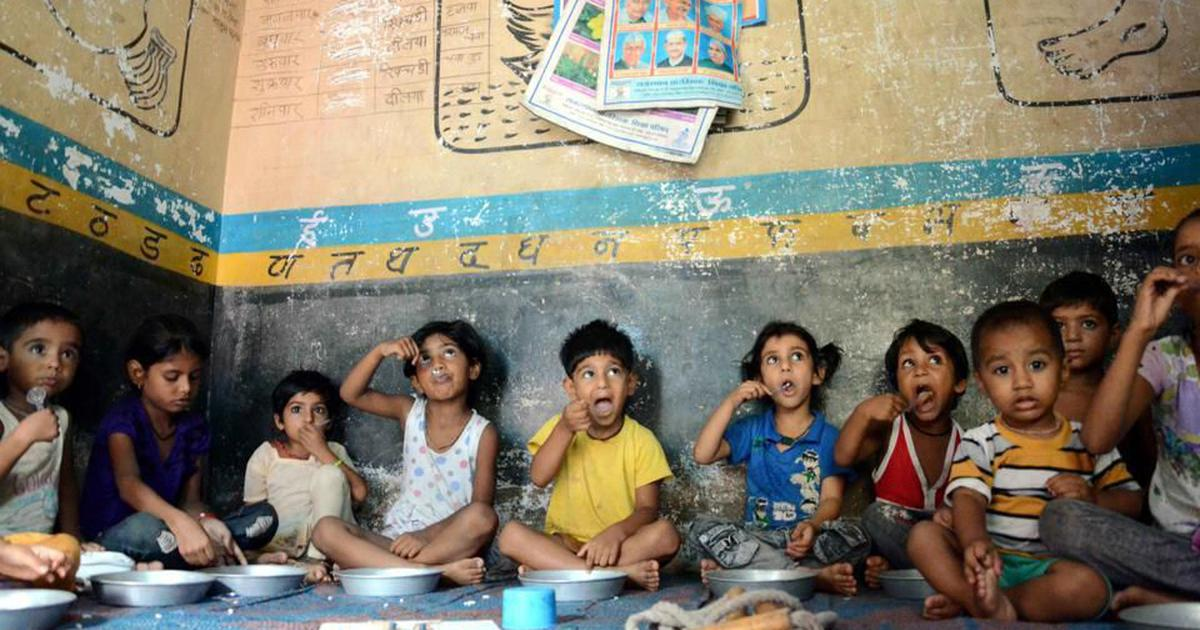Description

Copyright infringement not intended
Picture Courtesy: https://www.iasgyan.in/daily-current-affairs/pradhan-mantri-awas-yojana-pmay-28
Context: The Pradhan Mantri Awas Yojana - Urban (PMAY-U) scheme, launched with the ambitious goal of "Housing for All" by 2022, has fallen short of its target.
Details
- The Pradhan Mantri Awas Yojana (PMAY) is a centrally sponsored scheme launched by the Indian government in 2015 with the objective of providing "Housing for All" by 2022.
- The scheme covers both urban (PMAY-U) and rural (PMAY-G) areas and aims to address the housing needs of economically weaker sections, low-income groups, and slum dwellers through various components and subsidies.
|
While the original target of building 2 crore (20 million) houses by 2022 has been missed, PMAY-U has been extended till December 2024 for completion of sanctioned houses.
|
Objectives of the PMAY Scheme
- Rehabilitation of Slum Dwellers: To improve the lives of millions residing in slums. PMAY's "In-situ Slum Redevelopment" (ISSR) vertical focuses on providing proper housing within existing slum areas, often with basic amenities like water, sanitation, and electricity.
- Affordable Housing for Weaker Sections: To address the affordability gap for economically weaker sections (EWS) and low-income groups (LIG). PMAY's "Credit Linked Subsidy Scheme" (CLSS) offers interest rate subsidies on home loans, making them more accessible for these groups.
- Partnership with Public and Private Sectors: To leverage resources and expertise from both sectors. Public entities like government agencies can provide land and infrastructure, while private developers can bring their construction capabilities. However, successful partnerships require careful planning and ensuring private sector involvement benefits the target beneficiaries.
- Subsidy for Beneficiary-led Construction (BLC): To empower eligible beneficiaries to construct or extend their own houses. PMAY provides financial assistance to partially cover construction costs, making homeownership more attainable.
|
Overall, the objectives aim to create a multi-pronged approach to address the housing shortage in India, particularly for underprivileged sections.
|

Components of PMAY
- Pradhan Mantri Awas Yojana Gramin (PMAY-G): This component caters to rural housing needs. It provides financial assistance to eligible rural households for building new pucca houses or renovating existing ones.
- Pradhan Mantri Awas Yojana Urban (PMAY-U): This component focuses on urban housing, targeting economically weaker sections (EWS), low-income groups (LIG), and middle-income groups (MIG) residing in urban areas. It works through various verticals:
- Credit Linked Subsidy Scheme (CLSS): This provides interest rate subsidies on home loans availed by beneficiaries from banks and housing finance companies.
- Beneficiary Led Construction (BLC): This empowers beneficiaries to construct their own houses on their own land with financial and technical assistance from the government.
- In-Situ Slum Redevelopment (ISSR): This aims to redevelop existing slums by providing better quality, affordable housing on the same land.
- Affordable Housing in Partnership (AHP): This encourages public-private partnerships for building affordable housing units.
|
Centre’s Contribution and Investment Expenditure
●The central government contributes around 25% of the total investment expenditure, amounting to approximately ₹2.03 lakh crore.
●Beneficiary households bear a significant portion (60%) of the investment, while state governments (along with Urban Local Bodies) contribute around ₹1.33 lakh crore.
|

Challenges
- Private Sector Participation in PMAY-U: While the scheme relies on private developers for slum redevelopment, the high-rise model often proves to be a double-edged sword. These buildings may be unaffordable for slum dwellers and might not cater to their specific needs and way of life.
- Land Acquisition Hurdles: Acquiring land, particularly for ISSR projects, is a major obstacle. Complexities in land ownership rights and regulations often lead to delays and stalled projects.
- City Master Plans as Obstacles: City master plans often prioritise commercial development over social housing needs. This makes it difficult to find suitable land for PMAY projects in desirable locations.
- Focus on Beneficiary Contribution: The scheme relies heavily on beneficiaries to finance a significant portion of their houses. This can be a barrier for the poorest sections of society who may not have the upfront capital required.
Way Forward
- Community Participation in ISSR: Including slum communities in the planning and design of ISSR projects could lead to more user-friendly and affordable housing solutions.
- Land Policy Reforms: Streamlining land acquisition processes, especially for slum redevelopment, can expedite project completion.
- Financial Support for the Most Vulnerable: Increased financial support, including rental assistance, needs to be provided for the poorest sections of society. This could help bridge the gap between what they can afford and the costs associated with PMAY housing.
- Focus on Sustainable and Inclusive Housing: Promoting low-cost, eco-friendly housing solutions that cater to the specific needs of low-income residents is vital. Sustainable materials and designs can help bring down construction and maintenance costs, while also considering the environmental impact.
- Performance Monitoring and Transparency: Robust monitoring mechanisms are needed to track project progress, identify bottlenecks, and ensure efficient use of allocated funds. Transparency in beneficiary selection and project allocation will also be crucial for building trust and ensuring the scheme reaches those who need it most.

Conclusion
- While the PMAY scheme has made significant investments and efforts towards providing affordable housing, various challenges related to land availability, private sector participation, and community engagement have impacted its outcomes. Addressing these challenges through improved planning, governance, and community involvement will be essential for achieving the goal of "Housing for All" in India.
Must Read Articles:
STATUS OF PMAY-U
PRADHAN MANTRI AWAS YOJANA (PMAY)
Source:
The Hindu
|
PRACTICE QUESTION
Q. India's urban growth is primarily driven by migration from rural areas. How can policymakers balance the need for economic opportunities in cities with ensuring sustainable development in rural areas to prevent excessive migration and its negative consequences?
|










.jpg)

.png)

